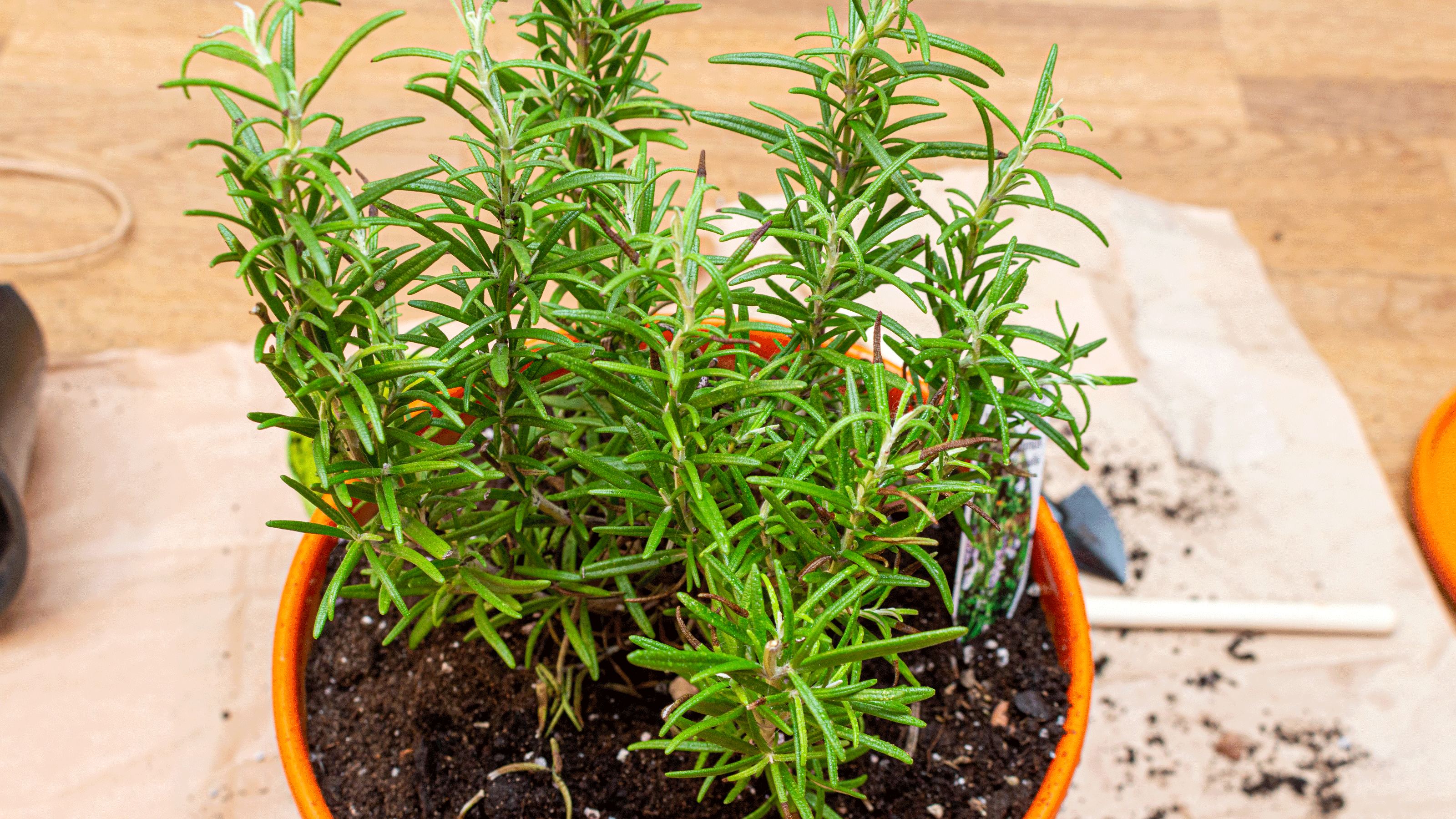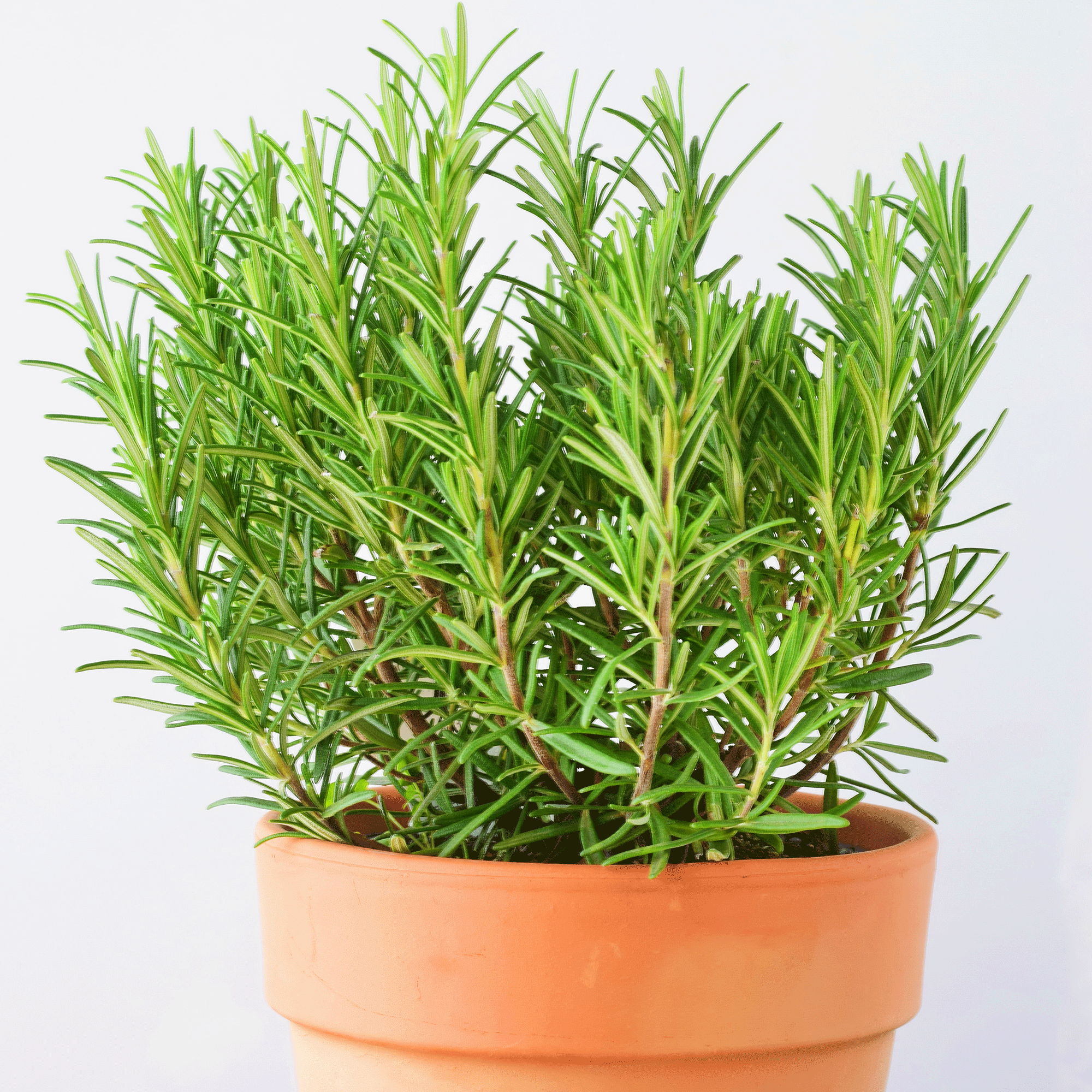How to propagate rosemary – a step-by-step guide to grow the tasty herbs for free
Learn how to propagate rosemary in pots on your windowsill or outside


Knowing how to propagate rosemary can be a great budget-friendly summer herb garden idea. From adding it as a garnish to your favourite cocktail to using it in dishes like stews, soups or even on the barbecue, learning how to grow your own rosemary can be a brilliant way to add flavour, as well as some greenery to your home.
Rosemary, in particular, can be a fantastic option for those of us who are looking for inexpensive plants to grow or are new to gardening.
How to propagate rosemary
Propagation is one of the best budget garden ideas, as you can essentially grow new plants for free or much less than buying new plants and learning how to propagate rosemary is surprisingly easy.
‘Rosemary cuttings can be taken at any time of year, but late spring and early summer is when you’ll usually have the most success, as the plant will be in active growth and the warm, sunny weather will help it to flourish,’ reveals Daniel Carruthers, director of sales at Cultivar Greenhouses.

What you’ll need
- Thyme cuttings from a healthy plant
- A pot with a drainage hole; this small plant pot and saucer from H&M Home is one of our favourites and it’s available in a range of colours
- Compost; try the Westland John Innes No.2 Peat-free Compost from B&Q
- A hormone-rooting agent; such as this Doff Natural Rooting Powder from Amazon
- A pair of secateurs or clean, sharp scissors
- A knife
- A dibber or pencil
- The top half of a clear plastic bottle or clear plastic bag and four small stakes
- A watering can with a rose attachment; try this Galvanised Watering Can from Dunelm
Step-by-step
1. Select the right established rosemary plant to take cutting from
Before you propagate rosemary, it is imperative that you set yourself and your new herb plants up for success by choosing the right parent plant.
Keep an eye out for any pests or fungal-growth before you start to cut as you need to start with a healthy and well-established plant to garner the best results.
‘The aim is to take a cutting two to four inches long – this will become your new rosemary plant,’ affirms Daniel. ‘To do so, take your established rosemary and find a stem with three or more nodes (that’s the place where a new leaf will emerge), and snip just below a node (or set of leaves) and you have your cutting.’
Sign up to our newsletter for style inspiration, real homes, project and garden advice and shopping know-how
Then you’ll want to strip the leaves from the bottom couple of inches of the stem, to get it ready to be planted. Angela Slater, gardening expert at Hayes Garden World, recommends taking a ‘sharp knife to cut off the base. Do this just beneath one of the nodes where leaves grow from. This helps your cutting develop and retain moisture.’

2. Set up your pot or pots
Unlike other herbs which prefer water propagation, rosemary cuttings can be placed directly into the soil. Gently insert your cutting into a small pot or container, with a drainage hole at the bottom, that has been filled with fertile compost.
‘You might also want to use hormone rooting agent, which helps roots establish faster and gives your new plant a better chance of establishing,’ Daniel suggests. ‘If you are using a rooting hormone, add some of the powder or gel into a clean container and simply dip the end of the stem into it before planting.’
3. Pot your cuttings
‘Use a dibber or pencil to make holes around the edge of your prepped pot to plant your cuttings. Pop a cutting into each hole, making sure the compost fills in around each stem,’ details Fiona Jenkins, Gardening and Plant Expert at MyJobQuote.co.uk
4. Water to keep the cuttings moist
Once you’ve planted your cuttings, you’ll want to give them a good watering. Using a watering can with a rose head or attachment can provide a gentle but even covering. It is, however, important to ensure good drainage as rosemary roots can rot if they get too wet. This is why selecting a pot or container with drainage holes is particularly important.
You can ‘add a layer of stone or broken bits of brick and pottery,’ before you fill your container with soil or compost, according to Fiona. This will help any excess water to run out of the drainage hole.
However, ‘you want the cuttings to stay warm and moist, so use a windowsill and cover the pot with the top half of a clear plastic bottle or use a cold frame or propagator,’ recommends Fiona. Covering them with a clear plastic bag and using four small stakes to stop the plastic from touching the actual plants will do a similar job.
As your cuttings begin to establish roots in the first few weeks following planting, you want to ‘keep the compost moist but not wet,’ Fiona adds.

5. Cut the rosemary back to keep it manageable
After its initial growth, Fiona advises you, ‘cut your rosemary back after flowering to keep it in check and stop it getting too woody. This way it will stay manageable and keep producing young fragrant shoots for harvesting.’
6. Harden off your cuttings
‘As with all young plants, your new rosemary will need to become acclimatised to the great outdoors before being planted out,’ says Daniel. Doing this allows the herb to gradually get used to the change in temperatures and in turn become hardened to a change in weather conditions. It also makes the chances of your cuttings flourishing into a long-lasting plant that much higher.
‘To harden off, take it outside during the warmth of the day and place it in a partially shaded area. At night, bring it back inside. Gradually, over the space of a few weeks, put your herbs into a sunnier, more open spot during the day, and eventually, you will be able to plant your newly hardened rosemary plant outside for good,’ Daniel concludes.

7. Check for root development
To check that the roots are taking, which should start to happen in the first few weeks, ‘you can carefully tip the pot on its side,’ according to Fiona.
Once there’s a reasonable amount of root growth, you can start to pot each of the cuttings separately, either into larger pots and containers or directly into your garden.
FAQs
Where should I position my rosemary plant?
While it likes being in the sun, it does suffer in colder conditions, which is why Fiona suggests planting this particular herb in a sheltered spot.
You’ll also want to bring these plants inside over the colder winter months, if you can.
Can you grow rosemary cuttings in water?
‘Propagation by putting cuttings into water is not recommended for rosemary as it prefers a well-draining compost and is more likely to rot if left in water,’ reveals Angela.

Ellis Cochrane has been a Freelance Contributor for Ideal Home since 2023. Ellis has been writing about homes, interiors and gardens for four years now, with her also contributing to House Beautiful, Country Living, Expert Reviews, Real Homes and Stylist.